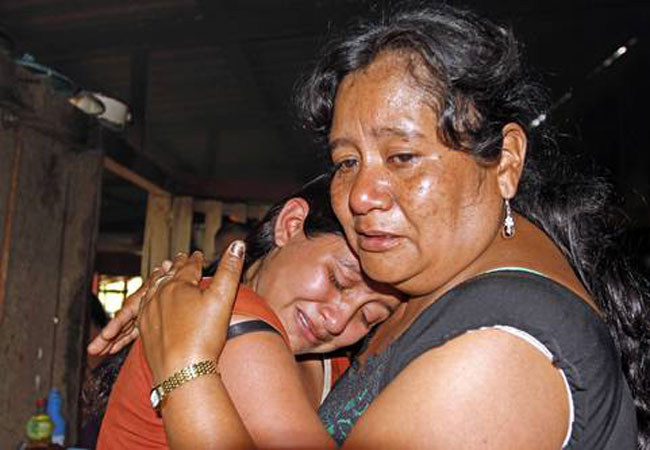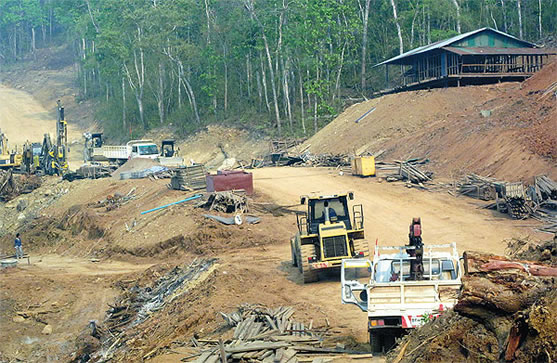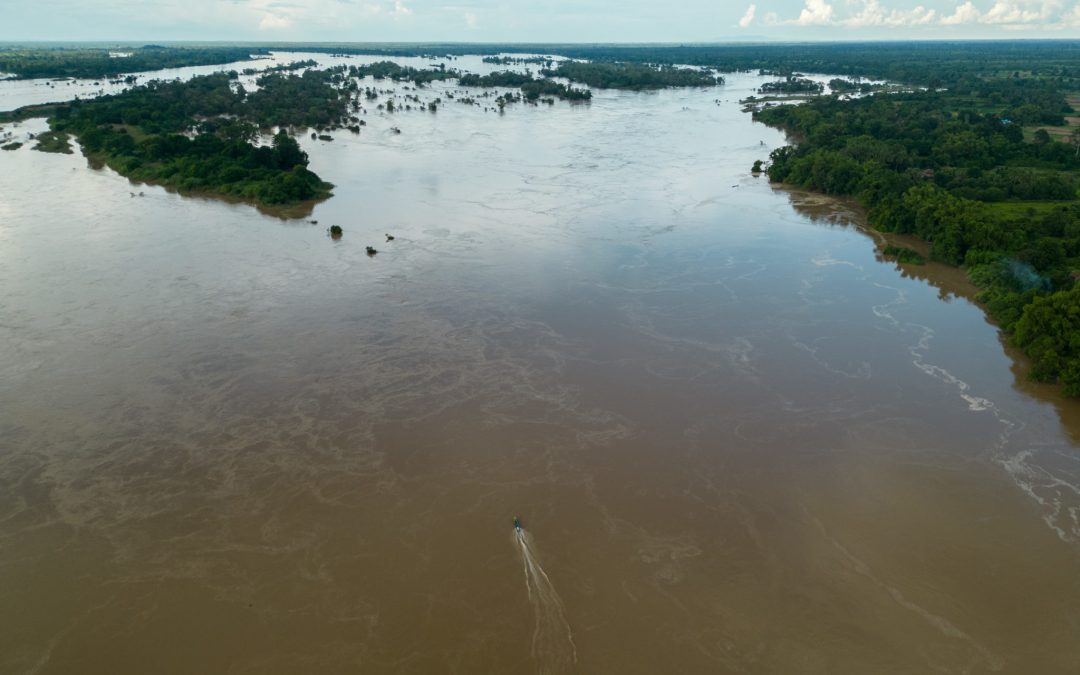
Damming Mekong: What It Means for Fishing Communities?
Editor’s Note: Development projects have always destroyed local ways of living and nonhuman communities. Numerous examples attest to that. The government of Cambodia need not look very far. The Lower Sesan 2 dam it built despite resistance has collectively been decried by national and international organizations for numerous human rights and indigenous rights violations. The government of Cambodia itself placed a ten-year ban on damming Mekong in 2020. Despite this, the government has permitted the group responsible for Lower Sesan 2 to conduct geological studies for building the Stung Treng dam along Mekong river. Previous studies have already outlined the devastating effects it can have on the fisher communities.
It is no surprise that states prioritize profits over local communities in their decision making process. Organized political resistance is required for the local communities to stand a chance against such decisions that hughly impact their lives.
By Gerald Flynn and Nehru Pry/Mongabay
- Cambodian authorities have greenlit studies for a major hydropower dam on the Mekong River in Stung Treng province, despite a ban on dam building on the river that’s been in place since 2020.
- Plans for the 1,400-megawatt Stung Treng dam have been around since 2007, but the project, under various would-be developers, has repeatedly been shelved over criticism of its impacts.
- This time around, the project is being championed by Royal Group, a politically connected conglomerate that was also behind the hugely controversial Lower Sesan 2 dam on a tributary of the Mekong, prompting fears among local communities and experts alike.
- This story was supported by the Pulitzer Center’s Rainforest Investigations Network where Gerald Flynn is a fellow.
STUNG TRENG, Cambodia — A long-dormant plan to build a mega dam on the mainstream of the Mekong River in Cambodia’s northeastern Stung Treng province appears to have been revived this year, leaving locals immediately downstream of the potential sites worried and experts confounded.
First studied in 2007, the 1,400-megawatt hydropower project, known as the Stung Treng dam, has reared its head in many forms, only to be canceled or scrapped. Finally, in 2020, Cambodia’s government announced a 10-year ban on damming the Mekong River’s mainstream, placing the Stung Treng dam and others on indefinite life support.
However, on Dec. 29, 2021, Royal Group — arguably Cambodia’s largest and best-connected conglomerate — wrote to the government, requesting permission to conduct a six-month feasibility study across a number of sites along the Mekong in a bid to revive the long-sought-after hydropower project.
The Ministry of Mines and Energy approved, and Stung Treng Governor Svay Sam Eang ordered district governors to cooperate with SBK Research and Development, a Phnom Penh-based consultancy hired by Royal Group, while they analyzed three sites for the dam between January and June 2022.
All the sites that SBK analyzed sit within or would affect the Stung Treng Ramsar site, a wetland of ecological significance that’s supposed to be protected by the Ramsar Convention, an international treaty to which Cambodia became a signatory in 1999.
Spanning some 14,600 hectares (36,100 acres), the Stung Treng Ramsar site stretches 40 kilometers (25 miles) up from the confluence of the Mekong and Sekong rivers, almost to the Laos-Cambodia border. It’s home to the white-shouldered Ibis (Pseudibis davisoni) and giant Mekong catfish (Pangasianodon gigas), both critically endangered species, and the Irrawaddy dolphin (Orcaella brevirostris), which is globally endangered but whose Mekong population is considered critically endangered.

‘We protested … it made no difference’
The Stung Treng dam has been the subject of many studies that have amounted to very little, first in 2007 by Bureyagesstroy, a subsidiary of Russian state-owned enterprise RusHydro. More than two years later, when it became apparent Russia wasn’t going ahead with the dam, Vietnamese state-owned enterprise Song Da also conducted studies.
The volleys of criticism that each study provoked has seen the Stung Treng dam shelved repeatedly. A 2012 study by the Cambodian Fisheries Administration’s Inland Fisheries Research and Development Institute found the Stung Treng dam would reduce aquatic food yields by 6% and 24% by 2030. This, the government’s own researchers warned, would lead to increased malnutrition and worse public health outcomes, especially among poorer, rural communities.
WWF’s Greater Mekong program then published an extensive brief in 2018 reiterating the threats posed by the Stung Treng dam to fisheries, agriculture, ecosystems and biodiversity.
By then, however, many of these fears had already been realized in the form of the Lower Sesan 2 hydropower dam.
Also located in Stung Treng province, roughly 30 km (19 mi) from the Ramsar site, the Lower Sesan 2 was approved in 2012 before going online in 2018 after a tumultuous series of studies throughout the 1990s. Following funding issues, Royal Group stepped in as a financier to save the project, but this didn’t stop the Lower Sesan 2 from rapidly becoming emblematic of the numerous problems associated with dams on the Mekong and its tributaries.
Even now, nearly four years after the dam’s completion, pro-government Cambodian and Chinese outlets continue attempting to resuscitate the Lower Sesan 2’s image, which was tarnished by the sheer scale of human suffering and environmental degradation it’s been linked to.
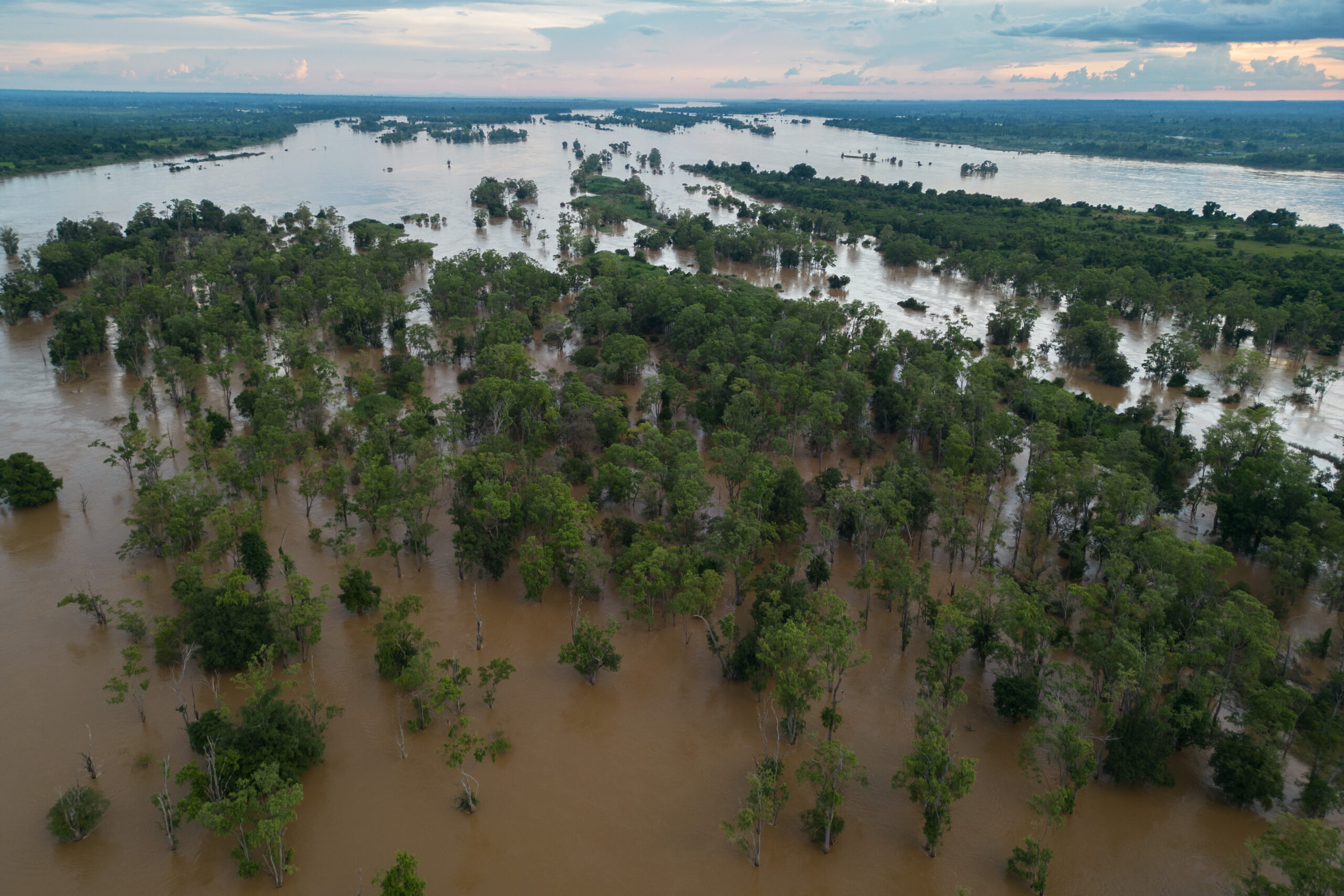
Royal Group maintains the dam is a success and says the project supplied 20% of Cambodia’s energy demands in 2020. But before the project was even finished, it came under fire from the United Nations, numerous NGOs both international and domestic, as well as thousands of affected residents displaced by the dam’s 30,000-hectare (74,000-acre) reservoir.
Since the dam’s completion, Human Rights Watch has branded the Lower Sesan 2 “a disaster” in a 137-page report released last year, calling the dam’s developers responsible for multiple human rights violations, abuses against Indigenous peoples, and a drastic decline in fisheries, along with failing to actually live up to its projected power generation targets.
Haunted by the Lower Sesan 2, the residents of the Stung Treng Ramsar site’s islands were deeply concerned when they saw SBK Research and Development engaged in geological studies and learned the prospect of the Stung Treng dam had returned again.
“The local authorities came round at the start of the year,” says Mao Sareth, chief of the Koh Khan Din fishing community in the south of the Stung Treng Ramsar site. “They told us they want to build a dam that’ll be 7 meters [23 feet] high and will affect 163 families — it’s going to be huge, 1,400 MW, that’s what they told me.”

Sareth is reluctant to discuss the details of the proposed dam, hinting that people have warned him against discussing the project with journalists. But for the 72-year-old, the number of families who would be affected if the Stung Treng dam goes ahead would be much higher than what SBK’s consultants suggested, although the consequences for each island would vary depending on whether the dam was built up or downstream of their community.
“There are 144 families in our village alone, with plenty more spread across the islands and there are hundreds of islands here, full of people who farm and fish,” Sareth says. “Of course we’d be affected if they build the dam, lots of communities would be flooded, everyone relies on agriculture here, the dam would destroy our crops.”
Already at the mercy of water released or withheld by dams upstream in Laos, Sareth says his community exists in a fragile balance, eking out an existence that hinges on access to fish from the water and crops nourished by it. The Stung Treng Ramsar site’s ecosystem, he says, has held the community together, with only seven families leaving last year to find day-laborer work in Thailand.
“Most people try to stay and find a new market for their crops,” Sareth says. “They can take food from the river — they can survive here.”
But Sareth is no stranger to defeat at the hands of hydropower developers, and knows that if the government decides to break its own ban on Mekong dam building, then it will be his community that suffers.
“We protested the Don Sahong dam in Laos because we knew it would hurt our people, our livelihoods, but our protests made no difference — they finished the dam anyway,” he says. “Then we protested the Lower Sesan 2 dam, but again, it made no difference, we had no results, only losses. We lost so much when they opened the water gates, crops, livelihoods, everything.”

Dammed and damned
Meanwhile, 12 km (7.5 mi) further upstream, the ecotourism and fishing communities on the island of Koh Snaeng say they fear a way of life could be erased by new hydropower projects.
Fifty-two-year-old Lim Sai is one of the estimated 1,000 people living across the four villages that make up Koh Snaeng, which straddles the Mekong within the heart of the Stung Treng Ramsar site, roughly 30 km from the Lower Sesan 2 hydropower dam.
“In general, we know if we protest, we’ll face consequences, we know there’ll be problems — maybe even lawsuits,” Sai says. “You can get sued for speaking out, so if the government doesn’t see the dams as a problem, then ordinary people like us have no tools to affect our future.”
Sai is a lifelong resident of the island and has seen it adapt in the face of an uncertain future. Koh Snaeng residents pivoted from fishing to farming when the first dams further upstream in Laos and China began to change the flow of the river upon which the island is situated. Then, as the climate crisis intensified and Cambodia’s rains became less reliable, residents again shifted their focus, this time to ecotourism.
Throughout these changes, Sai has worked in local government. But despite this role, he says his community has been largely ignored by the national authorities.
“They [the national government] only built a road connecting National Road 7 to the ferry that brings people to Koh Snaeng last year, we’ve been asking for one for around decades,” he says by way of example. “Maybe it was because we had the commune elections coming up this year and they knew we wouldn’t support them.”
Sai says the island is still very much reliant on the river and that he feels the latest hydropower study hasn’t factored his community into the decision.
Residents from Koh Khan Din were invited to a meeting in the Cambodian capital where representatives of Royal Group discussed the matter of relocation and compensation in June, but Sai says he only found out about this through others.
“The dam would have a huge impact, not just here, but all the way down to Phnom Penh, even in Vietnam — it would affect the water flows all the way downriver,” Sai says.

Ma Chantha, 29, serves as the deputy of Koh Snaeng’s tourism community and says that when residents saw SBK’s consultants drilling samples from the riverbed earlier this year, they came to her with their fears.
“People are very worried, they think they’ll lose their houses to floodwaters or be displaced,” she says, noting that the community-based ecotourism project spans both Koh Snaeng and the neighboring island of Koh Han, with roughly 2,750 residents participating in the project since its inception in 2016.
Chantha says NGOs are taking an interest in protesting the planned dam, adding that a festival to celebrate the islands’ ecotourism value was held in June and that the Bophana Audiovisual Resource Center is currently putting together a documentary about the islanders who call the Stung Treng Ramsar site home.
“We hope the video and the campaign are successful, or helpful at least, in stopping hydropower construction here, because people will see that there are ecotourism destinations worth protecting here,” Chantha says. “This kind of advocacy has given the people here a chance to stand up for their communities, I hope that makes people change their mind about building the dam here.”

Conflicting narratives
But while communities rally to stop the Stung Treng dam, there is little clarity over whether the project will go ahead. In March, government-aligned outlet The Phnom Penh Post reported that the dam had been “okayed in principle,” but offered little beyond the approval for the feasibility study to substantiate this.
Chantha and Sai of Koh Snaeng, as well as Sareth of Koh Khan Din, all agreed that they had been told in recent months that the project wouldn’t be going ahead, although none could provide any documents to verify this either.
“I’m happy if they really canceled it,” Sai says. “Then we can continue to use the river for fishing and tourism, but I only believe in the cancelation about 40% and even if they cancel it now, it could always happen later.”
Chantha says there’s been no official announcement of cancellation and that it may just be rumors spreading among hopeful residents. Sareth says a letter from August 2022 issued by the Ministry of Environment confirms the cancelation, but couldn’t produce the letter to show Mongabay by the time this story was published. Still, he says he’s confident it exists.
When questioned about the dam and the supposed cancellation, environment ministry spokesperson Neth Pheaktra denied having any information. Srey Sunleang, a senior ministry official responsible for freshwater wetlands and Ramsar sites, declined to comment.
Heng Kunleang, director of the Department of Energy at the Ministry of Mines and Energy, did not respond to questions sent by email, while Khnhel Bora, director of SBK Research and Development, says he’s also unaware of any cancellation.
Representatives of Royal Group, the conglomerate developing the dam, also did not comment for this story. The company will reportedly build the Stung Treng dam in partnership with China (Cambodia) Rich International, a company registered in Phnom Penh whose directors are all also key figures within Royal Group: Cambodian tycoon Kith Meng, Royal Group’s chief financial officer Mark Hanna, and chief of Royal Group’s energy division Thomas Pianka.
Hanna and Pianka did not respond to questions sent via email, while Kith Meng, who is also president of the Cambodian Chamber of Commerce and an adviser to Prime Minister Hun Sen, could not be reached for comment.
Royal Group’s track record on developing dams is so far limited to the 400-MW Lower Sesan 2, which was a joint venture with China’s state-owned Hydrolancang International Energy and Vietnam’s state-owned electricity utility, EVN International. In this partnership, Royal Group is believed to have been responsible for financing, rather than building, the dam.
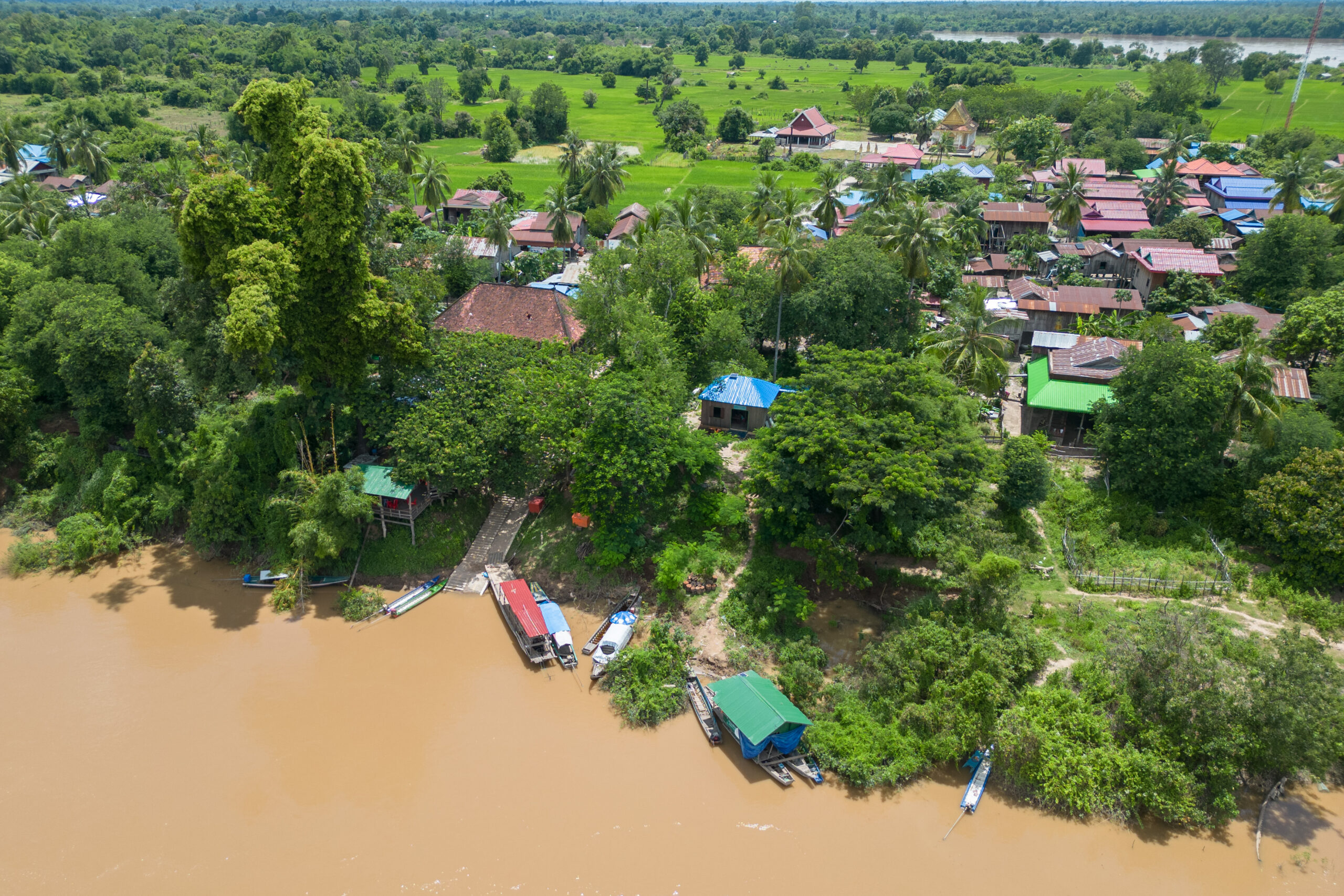
‘Beginning of the end’
Ian Baird, a professor of geography at the University of Wisconsin who specializes in studying hydropower development across Cambodia, Laos and Thailand, says he’s heard rumors of the Stung Treng dam project being resurrected. While it remains unclear exactly what would be built or where and how, he says, the project is a significant threat to the Mekong region.
“The Ramsar Convention is quite weak as governments can really do as they please in Ramsar sites, but Cambodia has been more responsive to international conventions than its neighbors and historically more concerned than others about international criticism, compared with Laos or Vietnam,” Baird says, pointing to Cambodia’s 2020 moratorium on Mekong dam building — a move that other Mekong Basin countries have not followed.
“But this is one of the reasons why exposing the problems related to the Lower Sesan 2 is very critical, because it’s the same developers,” Baird says, adding he’d hoped the failings of Royal Group’s first hydropower project would ward the government off from approving another.
If the Stung Treng dam gets the go-ahead, Baird says it would be more damaging than the controversial Don Sahong dam and the Xayaburi dam — both on the mainstream of the Mekong in Laos — and more significant than the soon-to-be-completed Sekong A dam on the Laotian stretch of the Sekong River, a key tributary that flows from Vietnam, through Laos and into the Mekong River in Cambodia.
“There’s a lot of reason for concern here, if it goes ahead, well – it’s the beginning of the end,” Baird says. “The Mekong is dying a death by a thousand cuts, I’ve watched it for years, and honestly, it’s sad, but what can you do?”
Residents point to Royal Group’s history in Stung Treng province as a reason to be fearful, adding that a new, significantly larger hydropower project could have even wider-reaching impacts.
“I don’t know what I’ll do if they go ahead with it,” says Sai from Koh Snaeng.
Featured image: A lone boat heads up the Mekong River through the Stung Treng Ramsar site. Image by Gerald Flynn/Mongabay.


